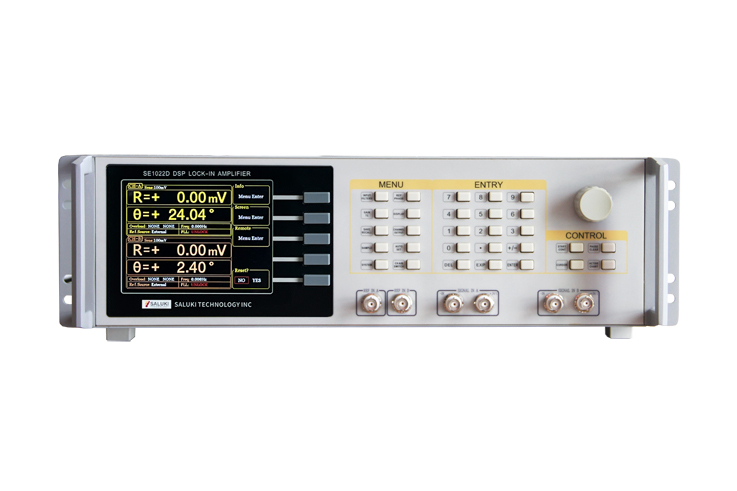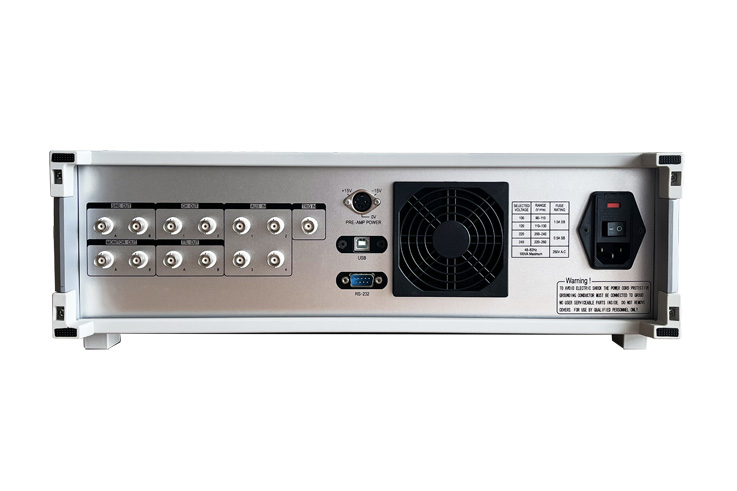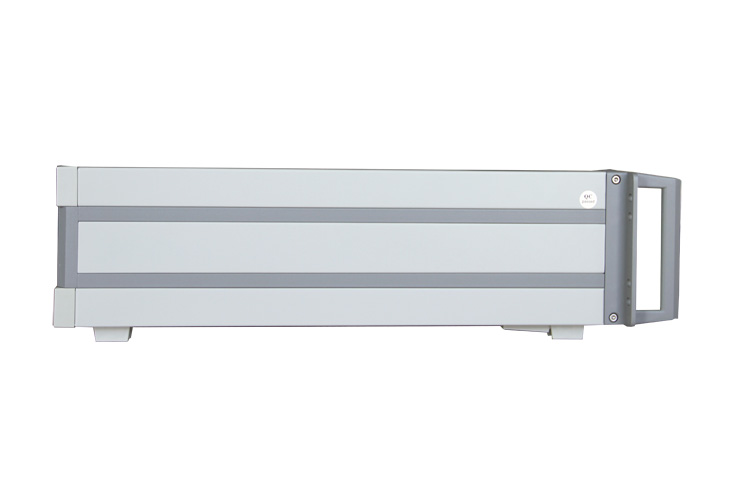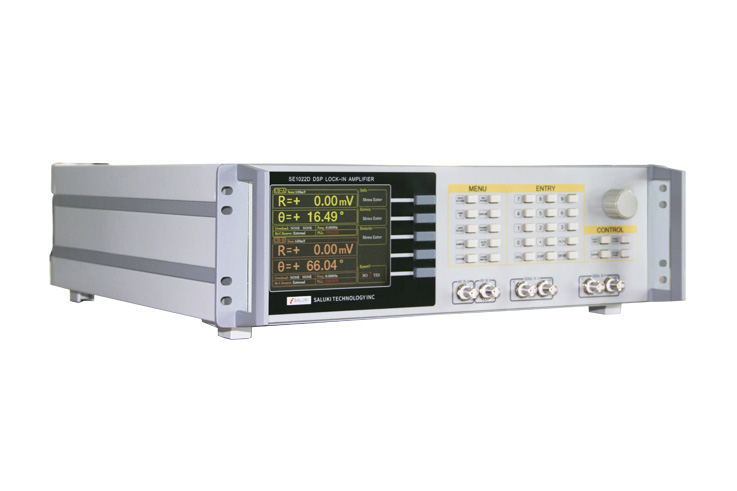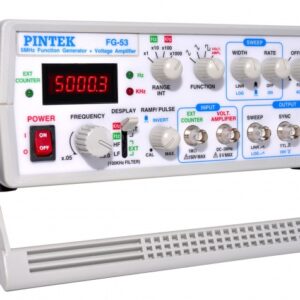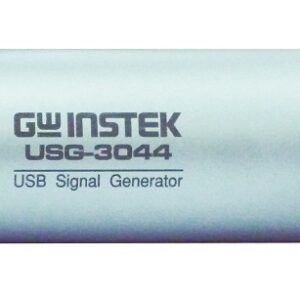Opis
SE1022D Digital Lock-in Amplifier provides an excellent performance within its bandwidth from 1 mHz to 102 kHz. More importantly, SE1022D has dual independent input channels and dual independent high precision signal generators. Each input channel and signal generator can be used independently which means that the SE1022D is equivalent to two traditional lock-in amplifiers. Moreover, due to the twin symmetrical design, the two independent input channels and signal generators have ultra-high synchronicity, which meets the measurement requirements demanding extremely high synchronization.
Key Features
- 2 independent input channels and 2 signal generators
- 1 mHz to 102 kHz frequency range
- 1 nV to 1 V full-scale sensitivity
- Time constants from 10 µs to 3 ks
- > 120 dB dynamic reserve
- Noise as low as 5 nV/√Hz @997 Hz
- Detect 6 harmonics at one time
- Dual-phase structure guarantees higher accuracy
- 5.6 inch color TFT-LCD screen, single or dual display
- Support remote control, embedded a free LabVIEW program
- Adopt high-precision 24-bit ADC and FPGA+ARM digital platform architecture, better than DSP architecture
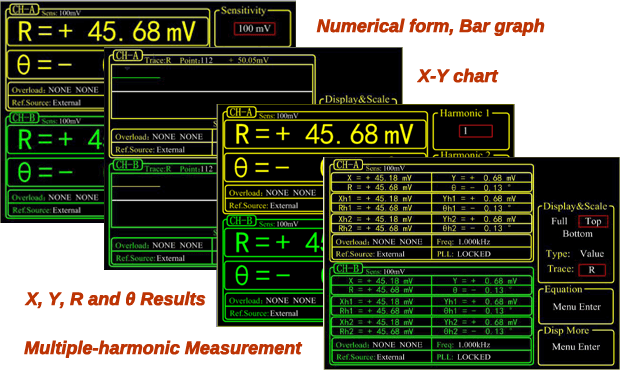
Multiple Application Areas
Scanning microscope: AFM, STM, SPM
Materials: Carrier mobility, Carrier density, Hall effect, Ultrasonic materials
Transport measurement: Conductivity measurement, Impedance measurement
Noise represents: Noise density, Cross-correlation measurement
Optical experiment: Spectral analysis, Spectral measurement, THz measurement, TDLAS
Sensor measuring: Gyroscope, Photoelectric sensor, Resonator, Accelerometer
Magnetic Sensor: SQUIDs, NV color center, Atomic Magnetometer, VSM
Biomedical: Microfluidic
Solar Cell Quantum Efficiency Detection
The quantum efficiency of solar cells is divided into two types: EQE and IQE. The test system includes dual-channel lock-in amplifier, optical chopper, monochromator and other equipments.
The detection light from the monochromator is split into two beams. One beam is converted into photocurrent and input to the channel 1 of lock-in amplifier for comparison. The other beam illuminates the solar cell, and the resulting photocurrent is measured by channel 2 of the lock-in amplifier.
The ratio of the two channel measurements, combined with the relevant formula, allows the quantum efficiency of the solar cell to be calculated.

Trusted by Universities and Research Institutes Around the World!
Typical Customers:
• The Hong Kong Polytechnic University
• Universität Regensburg
• Rice University
• Weizmann Institute of Science
• University of Wisconsin-Madison
• Massachusetts Institute of Technology
• University of Texas at Austin
• Northeastern University
You can trust us !

